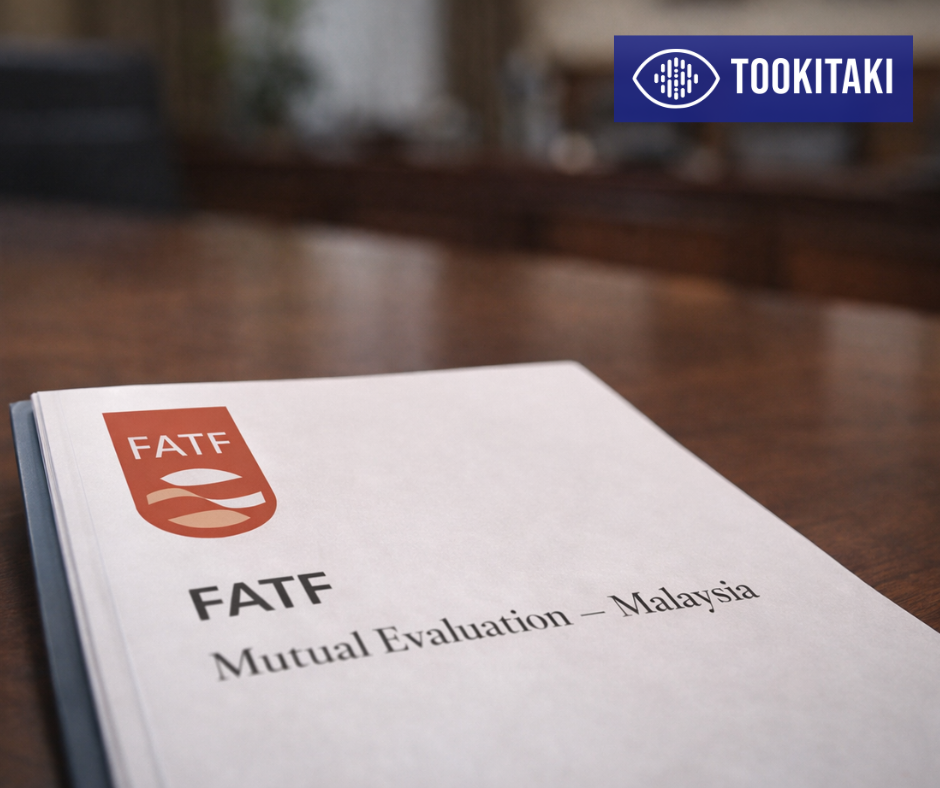Navigating Taiwan's New Anti-Fraud Law: How Can Businesses Comply?
.svg)
Fraud is a growing problem worldwide, and Taiwan is no exception. To fight this, Taiwan has introduced new anti-fraud laws to protect businesses and individuals. These laws aim to stop fraud at its source and make businesses more accountable.
The Fraud Crime Prevention Act is a big step forward. It requires industries like banks, e-commerce platforms, and telecom companies to follow strict rules to prevent fraud. Businesses that fail to comply face heavy fines and serious risks to their reputation.
This blog will explain the new law and what it means for businesses. We will also show how Tookitaki’s advanced tools can help companies meet these new rules. With the right solutions, businesses can stay safe and compliant in this changing landscape.
Understanding the Fraud Crime Prevention Act
Taiwan’s Fraud Crime Prevention Act is designed to tackle fraud by focusing on its source. It introduces a “source-based fraud prevention mechanism” that requires businesses to block fraud at its origin. The law also promotes collaboration between businesses and law enforcement to stop fraud effectively.
Several industries are affected by this law. These include financial institutions, virtual asset service providers, telecommunications companies, e-commerce platforms, and online gaming providers. Each of these sectors plays a crucial role in preventing fraud by monitoring their services and users.
The Act also comes with strict penalties for non-compliance. Businesses can face fines of up to NT$100 million if they fail to meet the law’s requirements. This highlights the importance of adopting effective fraud prevention measures to stay compliant and protect their reputation.
New Obligations for Businesses
Taiwan’s Fraud Crime Prevention Act outlines specific responsibilities for businesses to help combat fraud effectively. Below is a detailed breakdown of these obligations:
1. General Anti-Fraud Responsibilities
- Adopt Fraud Prevention Measures: Businesses must implement systems and processes to prevent their services from being misused for fraudulent purposes.
- Verify Customer Identities: Ensuring the authenticity of customer or user information is mandatory.
- Promote Fraud Awareness: Regularly share fraud prevention information with customers and employees.
- Cooperate with Law Enforcement: Businesses must support fraud investigations by providing necessary data and insights.
2. Industry-Specific Obligations
Certain industries have tailored requirements under the Act:
Financial Institutions and Virtual Asset Service Providers:
- Collaborate with other institutions to monitor and control customers suspected of fraud.
- Share relevant data with counterparts to strengthen fraud detection measures.
Telecommunications Enterprises:
- Verify entry records of individuals before providing high-risk international roaming services.
- Refuse services to individuals with no valid entry records.
Online Advertising Platforms and E-Commerce Businesses:
- Appoint a legal representative responsible for compliance.
- Develop and maintain a comprehensive fraud prevention plan.
- Publish annual transparency reports on fraud prevention efforts.
Online Gaming and Payment Service Providers:
- Monitor user activities for potential fraud.
- Take steps to block access to fraud-prone services when necessary.
3. Safe Harbor Provisions
To encourage businesses to actively participate in anti-fraud initiatives, the Act provides legal protections:
- Joint Reporting Protection: Businesses collaborating with other entities or law enforcement are shielded from legal liability for confidentiality breaches.
- Exemption from Damages: Companies are not held responsible for damages to users or third parties if their actions comply with the Act’s anti-fraud measures.
- Encouragement for Cooperation: These provisions promote a unified and proactive approach to fraud prevention.
4. Penalties for Non-Compliance
Businesses face severe consequences for failing to meet these obligations:
- Fines: Penalties can go up to NT$100 million depending on the severity of non-compliance.
- Reputational Risks: Non-compliance may result in loss of trust and significant harm to brand reputation.
By adhering to these responsibilities, businesses can contribute to a safer financial and digital ecosystem while protecting themselves from legal and financial risks.
{{ cta-first }}
Challenges Businesses May Face
While the new law is a step forward in combating fraud, it presents several challenges for businesses. Meeting these obligations requires time, resources, and a clear understanding of compliance requirements. Below are some key challenges businesses might encounter:
1. Complexity of Implementing Anti-Fraud Measures
- Resource Constraints: Smaller businesses may lack the financial or technical resources to implement comprehensive fraud prevention systems.
- Evolving Fraud Tactics: Fraudsters constantly change their methods, making it difficult for businesses to stay ahead.
- Technological Gaps: Companies without advanced technology may struggle to meet the law’s requirements for identity verification and real-time monitoring.
2. Managing Industry-Specific Requirements
Sector-Specific Challenges:
- Telecommunications companies may face difficulties in verifying entry records for high-risk roaming services.
- Financial institutions need to establish efficient systems for data sharing without compromising customer privacy.
- Online platforms must invest in creating fraud prevention plans and publishing detailed transparency reports, which can be resource-intensive.
- Not all businesses have in-house experts to guide compliance with sector-specific obligations.
3. Balancing Privacy and Cooperation
- Data Sharing Concerns: Sharing customer or transaction data to comply with cooperation obligations might conflict with privacy laws or user trust.
- Safe Harbor Usage: Businesses may hesitate to fully utilize safe harbor provisions without a clear understanding of their legal protections.
4. Monitoring and Adapting to Regulatory Updates
- Ongoing Changes: Regulatory authorities are expected to issue subordinate regulations that businesses must adapt to.
- Keeping Procedures Updated: Companies need robust systems to continuously align internal policies with evolving compliance requirements.
5. Financial and Reputational Risks
- High Penalties: The risk of heavy fines (up to NT$100 million) puts significant pressure on businesses to ensure full compliance.
- Reputational Damage: Failing to comply with the law can lead to loss of trust among customers and stakeholders, affecting long-term profitability.
To address these challenges, businesses need solutions that are scalable, efficient, and tailored to their specific needs.
{{cta-whitepaper}}
How Tookitaki Can Help Businesses Adapt
Tookitaki provides innovative, technology-driven solutions to help businesses comply with Taiwan’s Fraud Crime Prevention Act. With a focus on proactive financial crime prevention, Tookitaki’s platforms empower organizations to meet regulatory obligations while enhancing efficiency and reducing costs.
1. Advanced Fraud Prevention with the FinCense Platform
Tookitaki’s FinCense platform offers an end-to-end suite of solutions tailored to prevent fraud and ensure compliance. The key modules of the platform include Transaction Monitoring, which detects suspicious activities in real-time to prevent fraudulent transactions. Smart Screening provides ongoing checks against politically exposed persons (PEP), sanctions, and other watchlists to ensure regulatory compliance. Additionally, the Case Manager serves as a centralized system for managing alerts and cases, facilitating efficient investigation and resolution. The benefits of these modules include improved fraud detection, fewer false positives, and seamless compliance.
2. Collective Intelligence Through the AFC Ecosystem
The Anti-Financial Crime (AFC) Ecosystem by Tookitaki harnesses collective intelligence by connecting financial crime experts worldwide, enabling them to share insights on fraud patterns and typologies. This community-driven approach is complemented by federated learning, which allows the platform to learn from shared, anonymized data across various institutions while maintaining privacy. Additionally, the ecosystem provides real-time updates, ensuring that businesses have access to the most current fraud trends and prevention strategies.
3. Leveraging Safe Harbor Provisions
Tookitaki’s solutions are designed to align with safe harbor provisions, enabling businesses to collaborate without fear of legal repercussions. Advanced encryption and privacy-preserving AI ensure secure compliance with data-sharing requirements.
Our platform can handle the growing needs of businesses, whether large enterprises or small startups. Automation and AI reduce operational costs by minimizing false positives and streamlining workflows.
By leveraging Tookitaki’s cutting-edge technology and collective intelligence, businesses can navigate Taiwan’s new anti-fraud regulations with confidence.
Final Thoughts
Taiwan’s Fraud Crime Prevention Act marks a significant step in combating fraud, setting high expectations for businesses to prevent and address fraudulent activities. While the regulations are rigorous, they also present an opportunity for businesses to strengthen their fraud prevention frameworks and build trust with stakeholders.
Tookitaki’s advanced platforms, such as FinCense and the AFC Ecosystem, provide businesses with the tools they need to meet these obligations effortlessly. With features like real-time fraud detection, tailored compliance solutions, and collaborative intelligence, Tookitaki helps businesses stay ahead of evolving fraud tactics while reducing operational costs and ensuring compliance.
Now is the time for businesses to act and adapt to this new regulatory landscape. Reach out to Tookitaki today to explore how our cutting-edge solutions can help you navigate Taiwan’s anti-fraud laws with ease. Let us help you transform compliance into a strategic advantage.
Experience the most intelligent AML and fraud prevention platform
Experience the most intelligent AML and fraud prevention platform
Experience the most intelligent AML and fraud prevention platform
Top AML Scenarios in ASEAN

The Role of AML Software in Compliance









